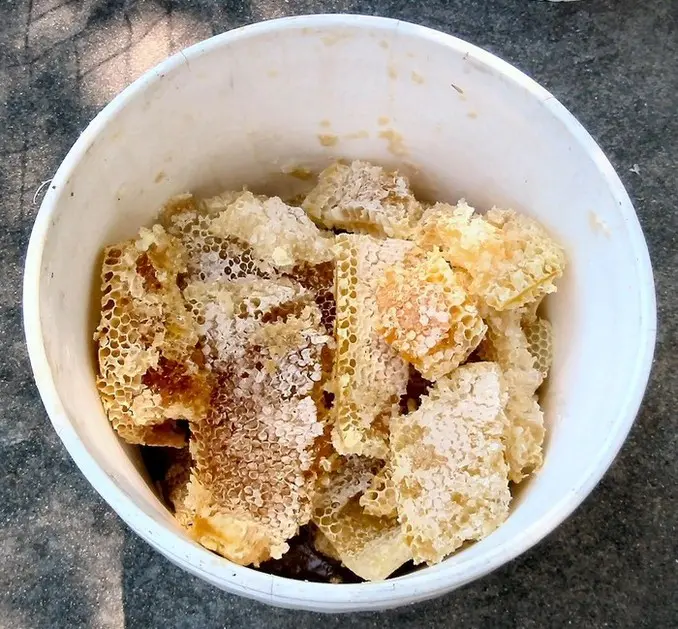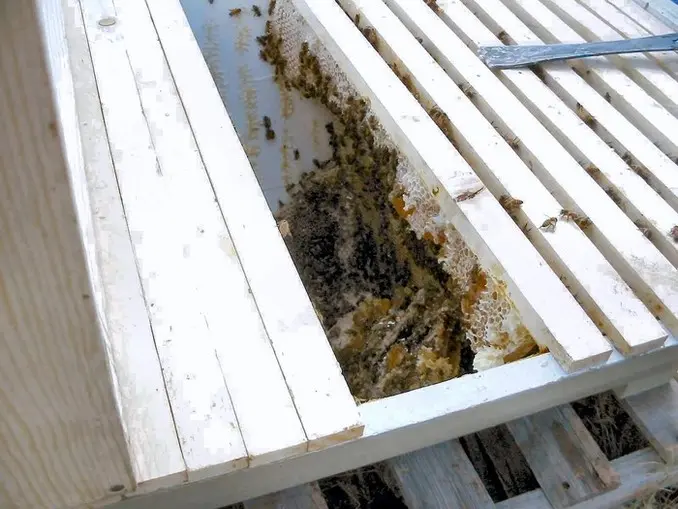Dealing with Failed Comb in a Bee Hive

Hey there!
So, sometimes comb doesn’t quite work out as planned, right? No worries, we’ve got your back. Let’s chat about it!
No Biggie, Really
Comb can be a bit finicky, and that’s okay. It might fail for various reasons, like when we stress the bees by:
- Removing top bars without cutting all the attachments.
- Cutting attachments the wrong way.
- Using not-so-great top bar handling techniques.
- Getting too cozy with new, heavy comb too soon.
But here’s the scoop: a single comb misstep won’t wreck the whole hive. Bees are champs at fixing things up. If a comb goes wonky, don’t fret. Damaged comb is a breeze to repair or replace. Here’s the drill for salvaging the situation:
- Pop the honey-containing comb into a container at the far end of the hive.
- The container should be big enough for all that sweet honey.
- Bees will do their thing and move the honey back into the broodnest.
- Combs without honey? Place them on the bottom board.
- Let the sealed brood hatch, but be careful not to trap emerging bees with flat combs.
- Open brood might get cannibalized.
- Stored pollen doesn’t get much action.
- The empty salvaged comb? Perfect for storing incoming nectar.
- Just make sure bees can access all sides of the comb.
- Once the bees work their magic, remove the comb.
To avoid any comb mishaps, check out the comb page.
Uh-Oh, Trouble Brewing
Comb can be a bit touchy, especially if you move a top bar hive too soon after messing with it. Bees need time to reattach the comb properly. After all, they attached it for a reason—they sensed it needed some extra strength.
If you’re too hasty, heavy comb without attachments might break off during a bumpy move, causing a ripple effect of comb failures. No one wants that! So, here’s a tip: don’t mess with a top bar hive right before moving it. Give those bees some time to work their bee magic and reattach that comb securely.
Oh No, Full-On Disaster Mode

-Oh dear! Picture this: it’s scorching hot, the comb is brand new, I took my sweet time, and the poor colony suffered.
The worst kind of comb failure happens when a top bar hive is:
- Caught off guard by hot weather.
- Worked on during a heatwave.
These conditions stress out all the comb in the hive.
When comb fails due to extreme heat, it’s not just about one comb biting the dust. The entire colony is at risk, and unfortunately, there’s no quick fix once the damage is done.
Collapsed, overheated comb is like the domino that starts a catastrophe:
- Honey flows down the bottom board.
- Bees retreat toward the entrance.
- Ventilation goes out the window.
- Other hot, weak combs decide to join the failure party.
This keeps going until:
- All combs fall like dominos.
- Most bees are either trapped or swimming in honey.
- The entrance is blocked by honey.
- Colony organization goes out the window.
- Bees can’t cool the hive anymore.
When the first comb goes down due to heat, resist the urge to quickly piece the broodnest back together. It’s too late:
- Moving or touching worked comb causes more failures.
- Bees take hours or longer to reorganize.
- Unseen comb failures only show up when honey starts pouring out of the entrance.
- Honey running out? Well, that’s a clear sign the hive is in trouble.
Leaving an overheated hive open lets you keep an eye on any additional failed comb. Bees might survive by climbing up and out, but it’s not the ideal fix:
- Comb keeps heating up and failing.
- Failed combs attract robber bees.
Always prep a top bar hive for hot weather before it gets too hot. And when it’s scorching, best to stay out! Check out the heat page for more info.
-Buzzingly yours, D 🐝🤠
